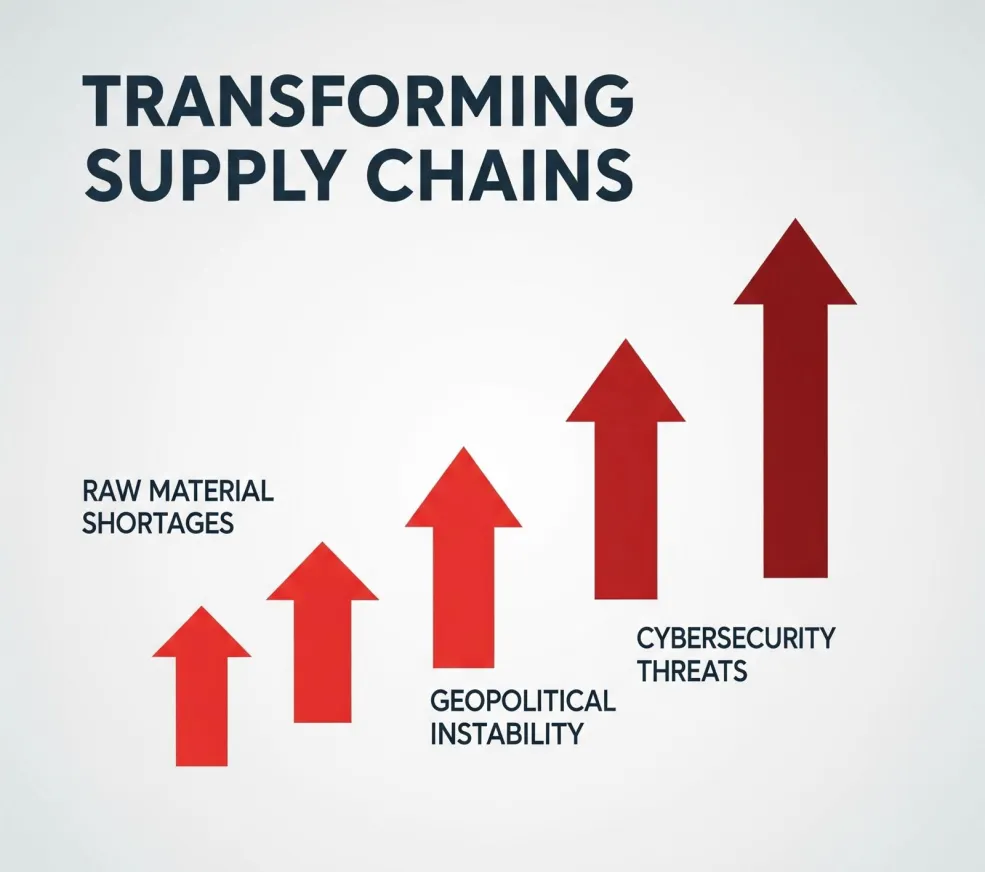
Modern Supply Chains
Diversifying and Innovating for Resilience
By: Destiny Dickerson
Over recent years, manufacturers worldwide have faced a series of disruptions that exposed vulnerabilities in traditional supply chains. Sudden lockdowns, shipping delays, labor shortages, and geopolitical tensions have highlighted that the long-standing focus on low-cost, global outsourcing is increasingly fragile. In 2025, the challenge isn’t just managing delays—it’s about fundamentally transforming supply chains to become more resilient and adaptive in the face of ongoing uncertainty.
Diversifying and Innovating for Resilience
One key lesson from the past decade is the risk of relying too heavily on a single supplier or region. Companies that sourced raw materials or components exclusively overseas were often caught off guard when global disruptions occurred. Many manufacturers are diversifying their supplier base by working with vendors across multiple regions to mitigate this risk. This strategy spreads exposure and minimizes the likelihood that one event—whether a natural disaster, trade conflict, or labor strike—will bring production to a standstill.
However, diversification isn’t a universal solution. Some manufacturers, especially smaller firms, may find that concentrating production in fewer locations helps reduce costs and maintain tighter quality control. There’s no one-size-fits-all strategy—each company must weigh the trade-offs based on its size, market, and goals.
Still, growing evidence supports the benefits of diversification. For instance, a McKinsey survey indicates that 73% of companies have progressed on dual-sourcing strategies, and 60% are actively working to regionalize their supply chains, enhancing resilience against disruptions.
Technology also plays a central role in supply chain transformation. Artificial intelligence, machine learning, and real-time tracking systems offer unprecedented visibility. These tools allow companies to predict inventory shortages, track shipments, and run simulations to prepare for various scenarios. By leveraging predictive analytics, manufacturers can make faster, data-driven decisions to avoid bottlenecks and respond quickly to shifts in supply or demand.
Inventory management is also evolving. The “just-in-time” inventory model—long praised for its cost-efficiency—proved vulnerable during disruptions. Many manufacturers are adopting a hybrid inventory strategy, maintaining safety stock for critical items while maintaining lean practices where appropriate. This balance, supported by AI-driven forecasting, helps prevent shortages without inflating storage costs.
Moreover, supplier relationships are shifting from transactional to collaborative. Companies increasingly share real-time data and forecasts with their partners, fostering deeper coordination. This approach improves planning on both sides and builds a more agile, responsive supply network.
Automation, Reshoring, and Agility: The Path Forward
Innovative factory technologies—such as robotics, real-time monitoring, and automated decision-making—further enhance flexibility. These systems reduce dependence on manual labor and allow production to adjust quickly in response to delays or changes in customer demand. As a result, manufacturers can maintain operations even amid uncertainty.
Reshoring—relocating production closer to home—is also gaining traction. While this strategy involves upfront investment, it offers greater control over quality, lowers transportation risk, and enables faster response to local market needs. According to a 2024 Deloitte study, the U.S. manufacturing sector continues to be a top industry for foreign direct investment, with trade agreements providing favorable financial incentives that drive the restructuring of supply chains toward more favorable trading partners.
Ultimately, agility is no longer optional—it’s essential. Manufacturers that invest in diversification, innovative technologies, collaborative partnerships, and flexible production models will be best positioned to navigate a world of ongoing disruption. The future of global manufacturing belongs not to the cheapest producers, but to the most adaptable.
Sources
- McKinsey & Company. (2023). Supply chains: Still vulnerable. Retrieved from https://www.mckinsey.com/capabilities/operations/our-insights/supply-chain-risk-survey
- Deloitte Insights. (2024). Accelerating the resurgence of American manufacturing. Retrieved from https://www2.deloitte.com/us/en/insights/industry/public-sector/american-manufacturing-renaissance-drive-new-era-prosperity.html